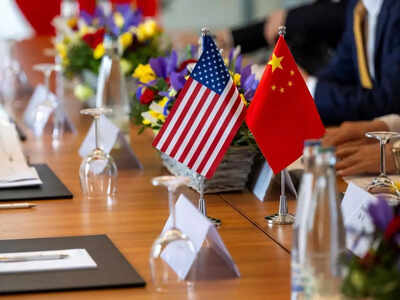A breakthrough in US-China trade talks in Geneva has brought some hope for China’s battered manufacturing sector, but the damage may have already wrecked many factory workers, as the job market remains tight.Tensions in the trade war have relaxed, sparing Beijing from a potentially severe crisis, widespread job losses that could have threatened social stability, a cornerstone that has helped the Communist Party to retain power and legitimacy.Dampened by the US tariff hikes of 145%, the Chinese economy continues to struggle, even after the trade talks, hurting the job market and slowing down the economy, Reuters reported.Will tariff cut bring back the sentiment ?While the talks have helped avert the crisis, challenges remain. A senior policy adviser close to the matter described the outcome as “a win for China,” adding, “factories will be able to restart operations and there will be no mass layoffs, which will help maintain social stability.”However, with tariffs still standing at around 30%, on top of pre-existing duties, businesses remain cautious. “It’s difficult to do business at 30%,” the adviser said. “Over time, it will be a burden on China’s economic development.”Before the Geneva meeting, signs of distress were evident. Beijing had grown alarmed at rising bankruptcy risks in labour-intensive sectors such as toys and furniture, according to sources cited by Reuters last week.Lu Zhe, chief economist at Soochow Securities, estimated that the number of jobs at risk has fallen to below 1 million, down from a range of 1.5 to 6.9 million before the tariff cut.Even so, Alicia Garcia-Herrero, chief Asia Pacific economist at Natixis, warned the threat hasn’t vanished, predicting the current tariff levels could still lead to 4 to 6 million job losses. “When you increase the tariffs to such a high level, many companies decide to stop hiring and to start basically sending the workers back home,” she said. “At 30%, I doubt they will say, okay, come back.”To cushion the impact, the Chinese government is stepping in with targeted investment and other measures. Last week, the People’s Bank of China unveiled a scheme to direct cheap funding toward service industries and elderly care, sectors seen as having potential to absorb displaced workers.“On employment, the most important driver will come from increased government investment given that the enthusiasm for corporate investment has yet to rise,” said Jia Kang, president of the China Academy of New Supply-Side Economics.Despite official efforts, the mood remains bleak on the ground. While Beijing may have avoided the worst-case scenario, for many, the scars of the tariff war are likely to linger far longer.
Trending
- Maharashtra, Karnataka account for 51 pc of FDI in India in FY25: Govt
- Over a dozen companies line up IPOs in 3-6 months
- Auto companies seek govt help for magnet imports
- China tightens supply: India’s auto industry seeks govt help on rare earth magnet imports; key EV parts impacted
- Mohandas Pai flags lack of domestic capital for Indian startups; urges policy overhaul; calls for stronger R&D support
- Trump-Musk rift rattles Wall Street; Tesla share slide exposes market fragility; major indexes take a hit
- Real estate market: Major listed firms sell over Rs 1 lakh crore properties; Godrej leads
- Delhi infrastructure project: Centre approves Rs 24,000-crore plan to decongest Delhi; Tunnel to link Mahipalpur to Vasant Kunj
- Tata Steel new plant: $1.5-billion electric arc furnace facility to come up at Port Talbot; UK government gives 500 million pounds
- RBI repo cut effect: HDFC slashes lending rates by 10 bps; new rates already in effect



